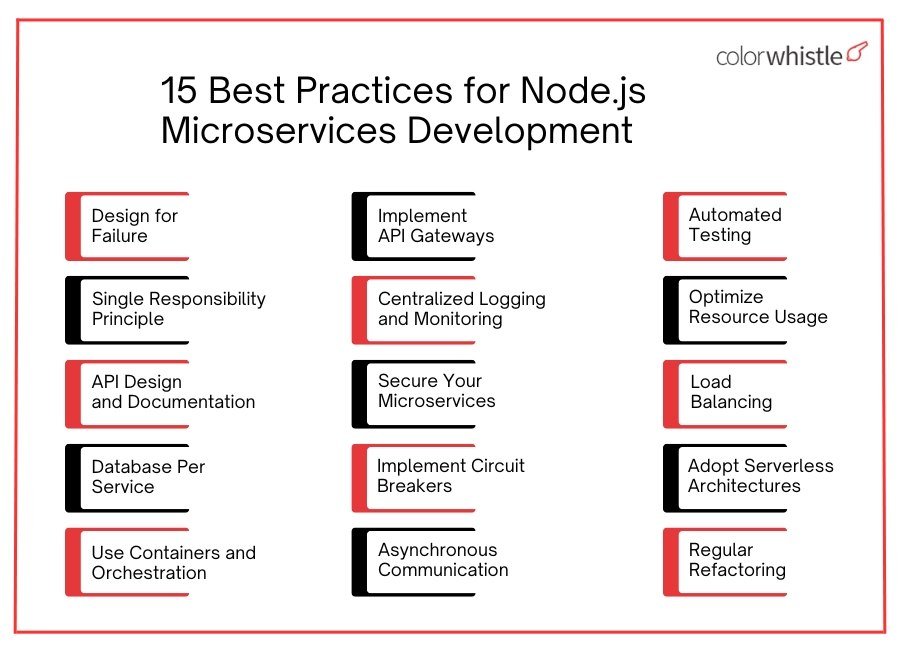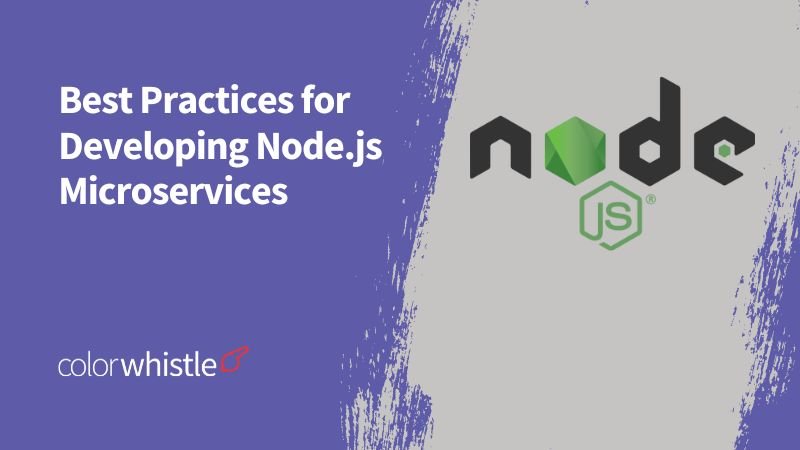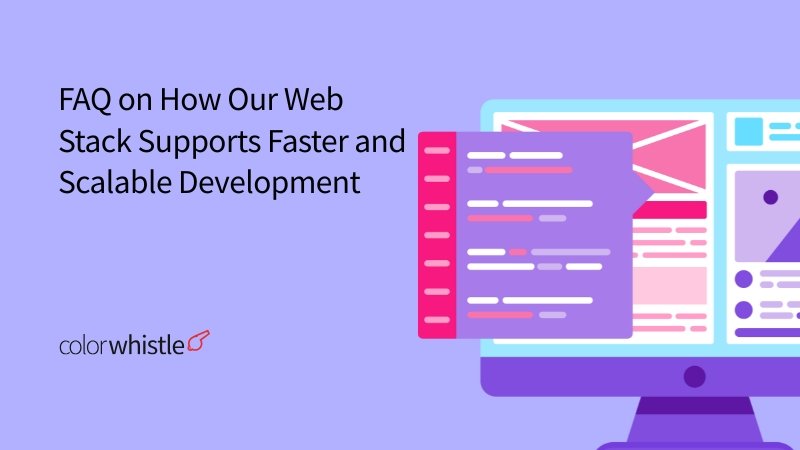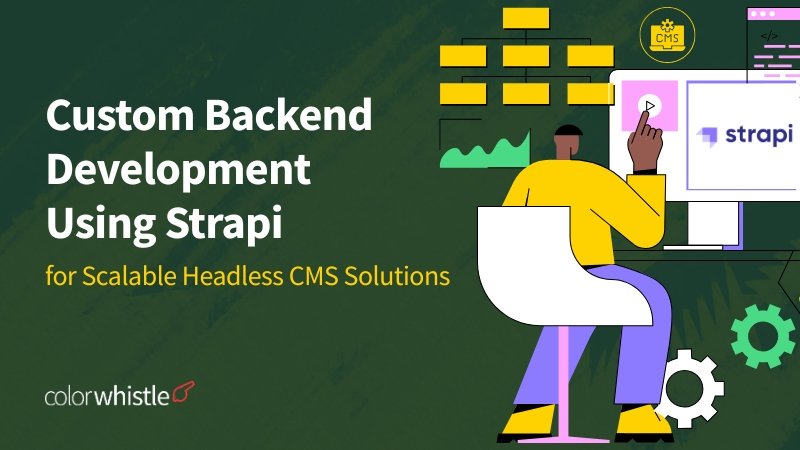Consider Node.js microservices as a bustling food court, where each service is a distinguished chef presenting their culinary masterpiece. However, without effective coordination shared menus, synchronized orders, and spotless kitchens you risk serving charred pizzas, splattered soups, and frustrated customers. Although inherently autonomous microservices require a structured framework to collaborate seamlessly.
The process of developing microservices is not simply about combining ingredients; it’s about formulating a recipe for success that guarantees scalability, security, and maintainability. Whether you are a culinary expert or just starting your journey, adhering to the right principles will prevent your services from spiraling into a culinary debacle. By leveraging effective Web App Development Services, you can ensure that your microservices are well-structured and efficient.
This blog will present 15 important best practices for developing Node.js microservices in 2025, designed to assist you in building a scalable and efficient system.
What are Node.js microservices?
Node.js microservices represent a software architecture strategy that divides applications into smaller, self-sufficient services, each tailored to execute a particular task. These services interact via APIs, enhancing scalability, maintainability, and adaptability. With Node.js, developers can build high-performance applications that are simpler to manage and deploy, overcoming the challenges posed by conventional monolithic architectures.
Did You Know?
Node.js will likely continue being a leading choice for developing microservices primarily because of its lightweight architecture and non-blocking I/O system.
15 Best Practices for Node.js Microservices Development

1. Design for Failure
- Anticipate failures in service design to enhance system reliability.
- Employ strategies like retries, circuit breakers, and fallbacks to maintain stability during failures.
- Implement graceful degradation to allow continued functionality despite service outages, providing users with partial access.
- Conduct regular testing of failure scenarios to uncover vulnerabilities and strengthen system resilience.
2. Single Responsibility Principle
- Each microservice should be dedicated to a specific function or domain.
- This specialization facilitates easier management and scalability of services.
- The approach enhances maintenance by simplifying testing and debugging processes.
- A clear purpose for each service aids in identifying issues more effectively.
- Example use cases include distinct services for user accounts, product catalogs, and order processing in an e-commerce application.
3. API Design and Documentation
- RESTful APIs should be employed for standardized communication between services.
- Comprehensive documentation of APIs is essential for user accessibility and ease of use.
- API versioning is crucial to prevent breaking changes during updates, facilitating gradual client adaptation.
- Consideration of GraphQL can provide more flexible querying options, potentially reducing the number of requests required.
4. Database Per Service
- Each microservice should have its database to enhance independence and minimize coupling between services.
- Data management challenges include maintaining data consistency and handling transactions across multiple services.
- Consider implementing eventual consistency models to address data management issues when necessary.
- Event-driven architectures are recommended for effective data synchronization across services.
5. Use Containers and Orchestration
- Docker is used to containerize each microservice, isolating dependencies and environments.
- Containerization ensures consistent deployments across different environments.
- Kubernetes is utilized for orchestrating containerized applications and enhancing management capabilities.
- Kubernetes provides scalability and automates deployment processes for microservices.
- Resource management in Kubernetes involves setting resource requests and limits to optimize allocation for each service.
6. API Gateway Implementation
- A centralized API gateway serves as a single entry point for client requests.
- Simplifies client interactions with multiple backend services.
- Facilitates load balancing across service instances.
- Enforces rate limits to protect backend services from overload.
- Implements security measures, including authentication and authorization checks, at the gateway level.
Also Read
7. Centralized Logging and Monitoring
- Employ tools like ELK Stack or Prometheus to consolidate logs from all microservices, facilitating efficient troubleshooting.
- Establish monitoring dashboards to provide immediate visibility into service health metrics and performance indicators.
- Introduce alerting systems to promptly inform developers of potential issues, preventing escalation into critical failures.
8. Secure Your Microservices
- Utilize HTTPS to encrypt all communications between services, safeguarding sensitive data during transit.
- Implement strong authentication methods, such as OAuth2 or JWT tokens, to prevent unauthorized access to APIs.
- Enhance security by isolating services within distinct namespaces or virtual networks through network segmentation.
9. Implement Circuit Breakers
- Implement circuit breakers to temporarily halt calls to failing services, thereby preventing system overloads during outages.
- Establish fallback strategies to provide alternative responses when a service fails, ensuring continued user engagement.
- Monitor the real-time state of circuit breakers to gain insights into service health and performance.
10. Asynchronous Communication
- Event-driven architecture leverages message queues or event streams (e.g., RabbitMQ, Kafka) for asynchronous communication between microservices.
- Asynchronous messaging decouples service interactions, allowing services to function independently without waiting for responses.
- This architecture can improve overall system performance by facilitating non-blocking operations.
11. Automated Testing
- Integrate automated testing into the continuous integration (CI) pipeline to prevent bugs from new code changes.
- Develop unit tests for individual functions to ensure they work correctly.
- Create integration tests to verify interactions between different services.
- Conduct performance testing regularly to identify and address bottlenecks in the microservices architecture.
Also Read
12. Optimize Resource Usage
- Define resource requests and limits for CPU and memory in Kubernetes deployments to avoid resource contention.
- Implement scaling policies that adjust service instances based on real-time demand metrics.
- Continuously monitor resource usage to optimize costs related to cloud resources.
13. Load Balancing
- Implement load balancers to ensure even distribution of incoming requests across multiple service instances, enhancing overall responsiveness.
- Configure health checks in load balancers to automatically redirect traffic from unhealthy instances, maintaining service reliability.
- Employ dynamic scaling strategies that adapt to traffic patterns, optimizing resource utilization and performance.
14. Adopt Serverless Architectures
- Integrating microservices with serverless functions, such as AWS Lambda or Azure Functions, enhances application efficiency by managing tasks that do not require constant availability, leading to better resource optimization and scalability.
- Implement event-driven triggers, such as HTTP requests or database events, to activate serverless functions within the microservices framework.
- This strategy minimizes operational overhead, enabling developers to concentrate on coding rather than server management.
15. Regular Refactoring
- Consistently refactor the codebases of microservices to enhance their readability, maintainability, and overall performance.
- Stay informed about emerging technologies and frameworks to improve microservices architecture while minimizing risks.
- Implement proactive management of technical debt through regular code reviews and dedicated refactoring sprints.
Mastering Node.js Microservices for 2025 and Beyond
To conclude, the successful implementation of Node.js microservices in 2025 demands a strategic framework that focuses on scalability, security, and maintainability. Adhering to the 15 best practices discussed in this blog will enable developers to build resilient applications that satisfy user requirements while remaining responsive to changing market dynamics. For those looking for professional expertise, it is advisable to utilize professional Web App Development Services to guarantee that your microservices architecture is both efficient and effective.
If you are seeking professional Web App Development Services for your business platform, ColorWhistle offers a luxurious array of digital solutions tailored to meet your needs. Contact us at +1 (919) 234-5140 to start collaborating and achieving your business objectives.
What’s Next?
Now that you’ve had the chance to explore our blog, it’s time to take the next step and see what opportunities await!








